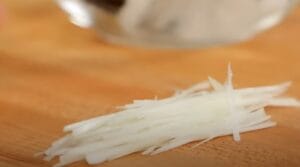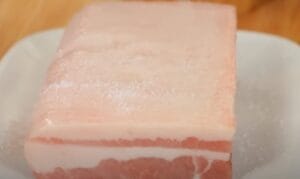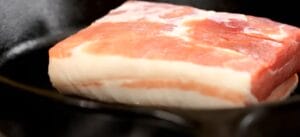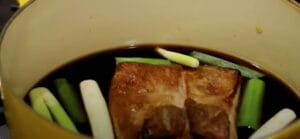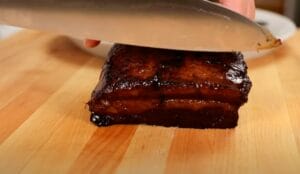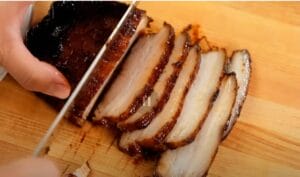Experience gourmet ramen at home – our best 5 chashu recipes promises melt-in-your-mouth pork belly in a savory broth
This braised pork belly originating from Chinese cooking has become a beloved topping for ramen and other Asian noodle dishes. When I first tasted the melt-in-your-mouth texture and sweet, savory flavor of chashu, I knew I had to try making it myself.
Cooking chashu at home has allowed me to put my own spin on the dish. I’ve played around with different marinades, trying out various combinations of soy sauce, sake, mirin, and spices. Through trial and error, I’ve landed on a chashu recipe I’m really proud of. Making chashu is a labor of love, requiring patience as you braise the pork belly for hours. But the results are so worth it.
I’m happy to be sharing my chashu journey on the Food and Meal blog. My goal is to demystify this delicious braised pork and encourage more home cooks to give chashu a try. While it does take some time, the active prep work is minimal. And the aroma of the pork belly braising will make your whole house smell amazing! I hope my chashu recipes inspire you to infuse a little more Asian flavor into your cooking. This versatile pork pairs beautifully with ramen, rice bowls, sandwiches, and beyond. I can’t wait for you to experience how the sweet and salty chashu sauce soaks into the tender meat.
What’s chashu ?
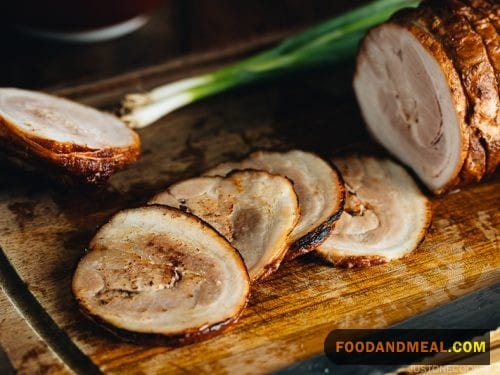
Chashu is a type of braised pork belly that is commonly used as a topping in ramen dishes. It has a rich, savory flavor that comes from slowly cooking the pork in a mixture of soy sauce, sake, sugar, and other seasonings.
I find chashu to be a delicious addition that adds a nice hit of umami and richness to ramen. The fatty pork belly becomes fall-apart tender after the long braise, while the seasonings permeate the meat to give it a wonderful depth of flavor. Slices of chashu draped atop a bowl of noodles can take an already tasty dish to the next level.
The preparation of chashu does require some time and patience since the pork needs to braise for several hours to reach the desired texture. But the hands-off process and amazing resulting flavor make it well worth the effort in my opinion. When that glistening slice of pork belly is placed in my tonkotsu ramen, it’s hard not to get excited about enjoying some spoonfuls of porky goodness between bites of noodles.
Best Chashu Recipes


Stewed Pork Appetizer ( Chashu )
Equipment
Ingredients
- 1 pound pork belly block, skin or rind removed (do not remove the fat)
- 1 teaspoon salt
- 1/ tablespoon cooking oil
- 2 tablespoons ginger peeled and sliced
- 1 stalk negi Welsh onion or green onion, cut into 2-inch pieces, green and white parts separated
Instructions
- Make sure to separate any green parts from the core of the white part of the negi or green onion.

- Slice the white parts thinly and soak in cold water for 10 minutes.

- Drain well and cover with plastic wrap. Set aside.

- Rub the salt over the pork.

- If your pork belly block is too large, roll it with the fat side out and tie it with twine. Small blocks may be kept as they are.

- In a skillet or frying pan, heat the oil over high heat.

- Brown the pork belly evenly on all sides (about 10 minutes).

- Combine the seasonings in a pot large enough for the pork to fit. Place the pork in the pot, together with the ginger and green parts of the negi or green onion.

- Add water,sake, soy sauce just up to the surface of the pork, and bring it to a boil. Cover with an otoshibuta or aluminum foil.

- Set the heat to medium-low and simmer the pork, turning from time to time, until the liquid is about 1/2 inch deep (about 1 hour). (At this point, you may set aside and freeze some of the chasu broth to be used for seasoning tonkatsu ramen.)

- Remove the otoshibuta and continue cooking until almost no liquid is left. Be careful not to scorch the pork but if you can, use the heat of the pot to caramelize the surface of the pork. Or remove the meat from the pot and use a propane torch to sear its surface.

- Cut the pork as thinly as possible. To store, allow it to cool and pack it in an airtight container. It keeps for 5 days in the refrigerator, and 3 weeks in the freezer.

- Serve in soups, ramen noodles, rice, and more.

Video
Notes
Nutrition
© Food And Meal
This website provides approximate nutrition information for convenience and as a courtesy only. Nutrition data is gathered primarily from the Spoonacular Database, whenever available, or otherwise other online calculators.
Slow Cooker Stewed Pork Appetizer

To make it, simply cube some pork shoulder and season it with salt, pepper, garlic powder, onion powder, paprika, and cayenne pepper. Sear the pork cubes in a pan with some oil to get some nice browning on the outside. Then transfer the pork to a best slow cooker and add some chicken or vegetable broth, soy sauce, brown sugar, sliced onions, and minced garlic.
Let it cook on low heat for 6-8 hours. The long cooking time allows the pork to become fall-off-the-bone tender. As it cooks, your home will fill with the incredible aroma of the stewing pork and seasonings.
Once cooked through, use a slotted spoon to transfer the pork cubes to a serving dish, spooning some of the cooking liquid over top to moisten it. I like garnishing it with some chopped green onions or cilantro.
How to make chashu in Oven
To make chashu in the oven, start by cutting the pork belly into large chunks or leaving whole, and scoring the skin side in a crosshatch pattern. This helps the braising liquid penetrate the meat. Next, make the braising liquid by combining soy sauce, mirin, sake, brown sugar, and spices like ginger and garlic in a bowl.
Place the pork belly skin-side up in a dutch oven or braising pan and pour the braising liquid over top until nearly submerged. Cover tightly with a lid or foil. Braise for at least 2 hours in a 300°F oven, flipping halfway through. The low and slow heat allows the pork to become very tender.
After 2 hours, check for doneness by poking the meat with a fork. It should be very tender and nearly fall apart. If not, braise for up to another hour until extremely tender. Once done, let the pork cool in the braising liquid until easy to handle.
Steamer chashu pork belly recipe
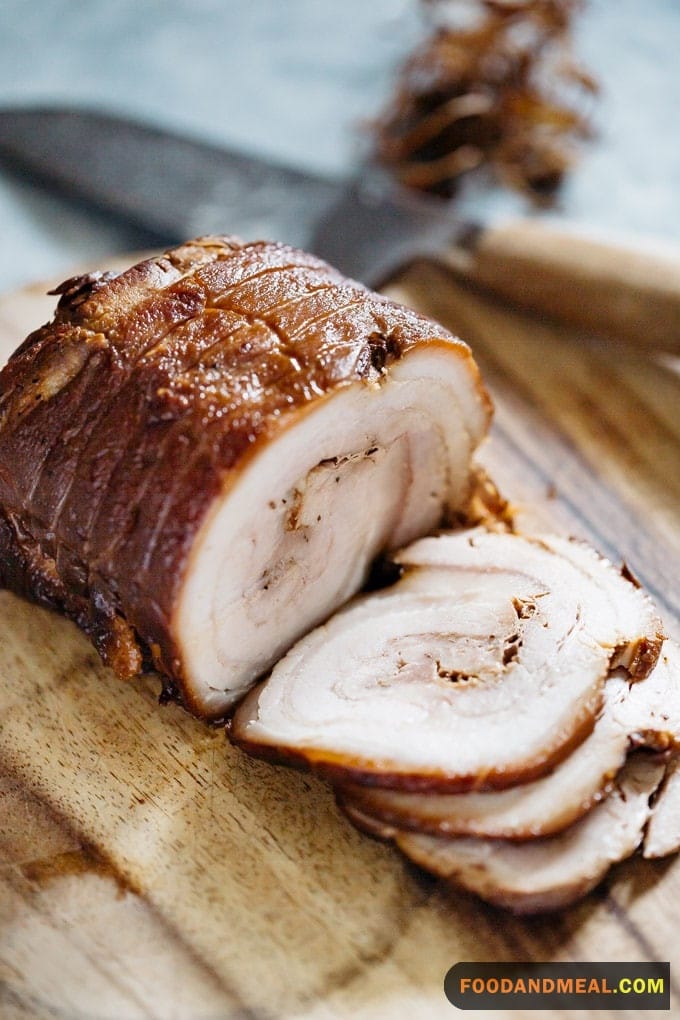
Place the pork belly pieces in a steamer basket set inside a wok or pot. Pour the braising liquid into the wok/pot, making sure the liquid fills the bottom and comes partway up the sides of the basket. This will allow the steam to keep the pork moist as it cooks.
Cover the pot with a tight fitting lid and steam the pork over gently simmering water for at least 2 hours, replenishing the water as needed. The steam provides gentle, even heat that tenderizes the meat slowly.
Check for doneness after 2 hours. The meat should be fall-apart tender when poked with a fork. If not, continue steaming for up to an hour more.
Once cooked through, remove the steamer basket and allow the pork to rest in the braising liquid until cool enough to handle.
Pressure-Cooked Japanese Braised Pork Belly Recipe
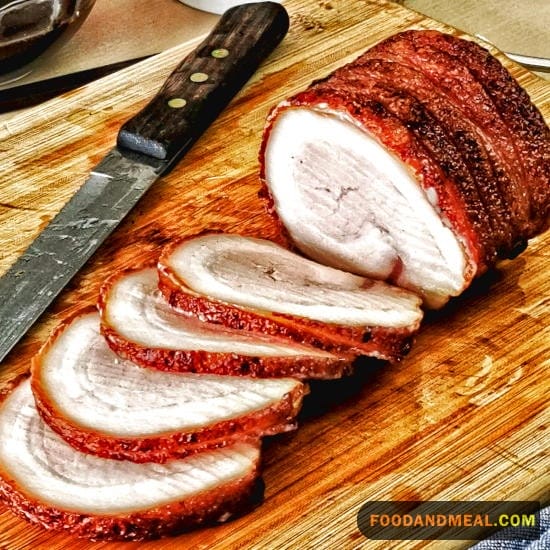
Place the pork belly pieces in the pressure cooker pot and pour the braising liquid over top until the meat is nearly submerged. Lock the lid in place and select the Meat/Stew setting on High pressure. Cook for 25-35 minutes. The pressure does the work of braising the pork in a short amount of time.
When finished cooking, use the quick or natural pressure release method before carefully opening the pot. Check that the pork is extremely tender when poked with a fork. If not, re-lock the lid and cook for another 5-10 minutes.
Once cooked through, remove the pork from the pot and allow it to rest in the braising liquid until cool enough to handle. Then slice and serve the pressure cooker chashu over tonkotsu ramen or rice.
Where to buy chashu ?
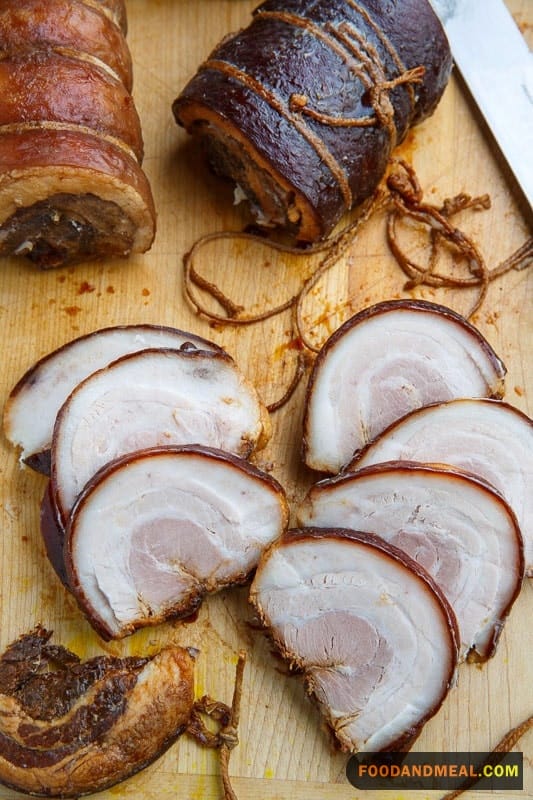
I’ve been on the hunt for chashu pork lately since it’s one of my favorite tonkotsu ramen toppings. However, I’ve had a hard time actually finding it in grocery stores. I searched all the usual suspects – my local supermarket, Trader Joe’s, Whole Foods, etc. – but no luck.
I was pretty bummed out and disappointed that I couldn’t easily get my hands on some delicious, melt-in-your-mouth chashu to top my homemade ramen. I had a strong craving for that sweet and salty braised pork belly!
After doing some digging online, I came across a few specialty Asian grocery stores in my area that supposedly carry it. I felt a rush of excitement and made plans to visit them the next day. Sure enough, I was able to find vacuum-packed chashu at a couple of the stores! I may have gotten a little overenthusiastic and bought more than I needed, but I was just so happy to have found it.
The moral of the story is that if you’re looking for chashu pork, try checking out your local Asian supermarkets, especially ones that specialize in Japanese ingredients. The regular mainstream grocery stores probably won’t have it. Don’t give up hope – do some searching and asking around, and you may very well be rewarded! Just be prepared to potentially buy in bulk.
Expert Tips for making Stewed Pork Appetizer
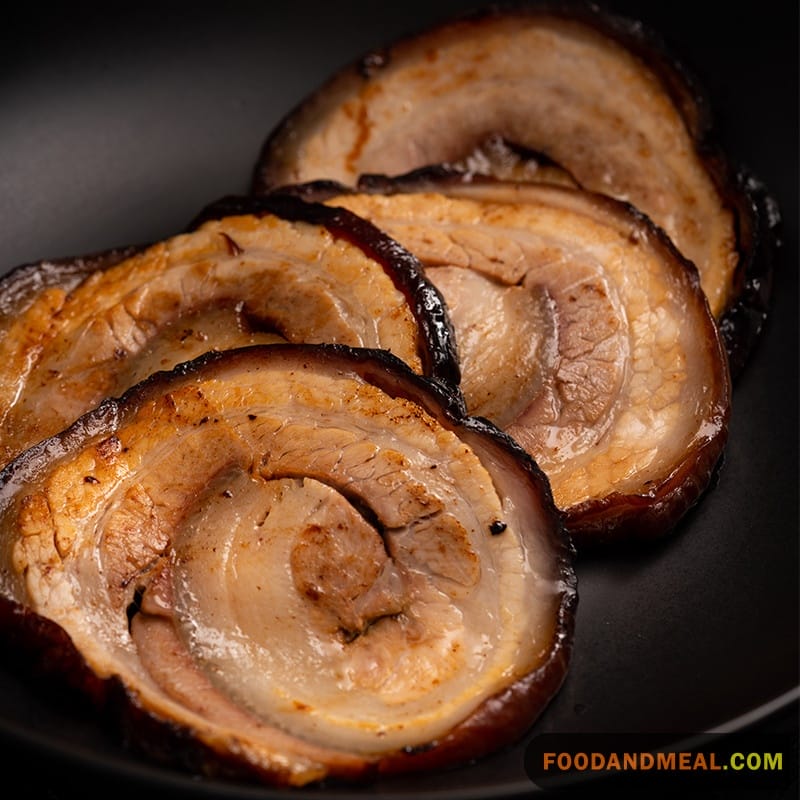
Cooking Tips for Perfect Stewed Pork Appetizer
I believe the keys to perfection with this recipe are choosing high-quality pork, taking time to marinate it properly, and cooking it low and slow to let the flavors develop. Cubed pork shoulder or belly work very well. Marinating the meat overnight in a blend of soy sauce, rice wine, ginger, and garlic allows the seasonings to fully penetrate.
When cooking, be patient. Gently stewing the pork over medium-low heat for an extended period allows the meat to become exceptionally tender while the braising liquid reduces into a luscious glaze. Resist the urge to hurry the process. The long cooking time is worth the wait.
Serving Suggestions to Elevate Your Stewed Pork Appetizer
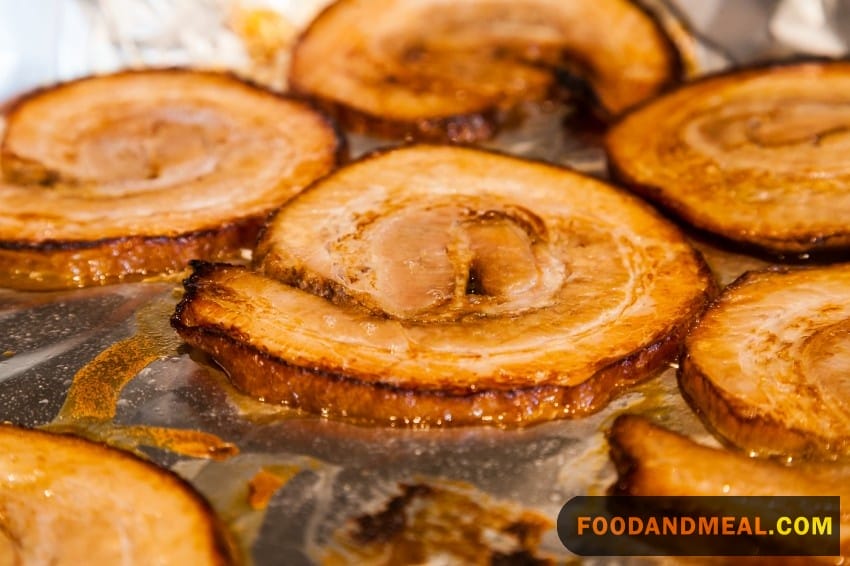
- Rice-Based Dishes: Chashu goes exceptionally well with steamed rice, providing a plain backdrop that allows the flavors of the pork to shine. A bowl of rice topped with chashu and perhaps a drizzle of the reduced braising liquid makes for a simple yet satisfying meal. Alternatively, you could serve it with a Chashu Bowl or a side portion of Persian Rice for a more aromatic option.
- Noodle Dishes: Pairing chashu with noodles is a classic choice. Ramen is the most obvious pairing, with Miso Ramen and Shoyu Ramen being top choices where chashu can be used as a topping. For a stir-fried option, Yakisoba would provide a textural contrast with its slightly crispy noodles.
- Soup-Based Sides: A lighter soup can balance the heaviness of chashu. Miso Soup or a simple Dashi Eggs soup could be a great accompaniment, offering a warm and comforting balance.
- Vegetable Dishes: To add freshness and crunch, serve the chashu with a side of Daikon Salad or a simple Scallion Salad. The crispness of the vegetables will help to cut through the richness of the pork.
- Tofu Dishes: A soft dish like Tofu Hiyayakko (chilled tofu) garnished with ginger and scallions can complement the chashu with its coolness and smooth texture.
- Pickles: Quick Pickles or Japanese-style pickled vegetables like White Kimchi can offer a tangy contrast to the sweet and savory chashu, cleansing the palate between bites.
- Beverages: Since chashu is rich, a refreshing drink like Soy Milk or Oat Milk can be served alongside to help balance the meal. These beverages can serve as a palate cleanser.
The key to a well-rounded serving suggestion for chashu is to ensure that there is a balance of flavors and textures. Richness from the pork should be paired with freshness or tanginess from the sides, and the meal should be accompanied by a beverage that offers refreshment.
Top 9 FAQs about Chashu Recipes

- What is chashu sauce made of?
- Chashu sauce typically includes soy sauce, sake, mirin, sugar, and sometimes other flavorings like garlic and ginger.
- What cut of meat for chashu?
- Pork belly is commonly used for chashu due to its balance of lean and fatty meat. The marbling enhances flavor and tenderness.
- What is the difference between char-siu and chashu?
- While both terms refer to a type of barbecued or stewed meat in East Asian cuisine, “char-siu” is more commonly associated with Chinese cuisine, and “chashu” is often used in Japanese ramen. The differences in seasoning and cooking methods may vary.
- Do you leave skin on chashu?
- Traditionally, chashu is made without the skin. The skin is usually removed from the pork belly before cooking to achieve a tender and flavorful result.
- Can I make this dish ahead of time?
- Absolutely! Stewed Pork Appetizer tastes even better the next day as the flavors meld. Just reheat gently.
- How do I store leftovers?
- To store leftovers, place them in an airtight container in the refrigerator. Consume within 3-4 days for the best quality.
- Can I freeze this dish?
- Yes, you can freeze Stewed Pork Appetizer. It will last for 2-3 months in the freezer. Thaw it in the refrigerator before reheating.
- What’s the best way to reheat this dish?
- Reheat on the stovetop over low heat to maintain the tenderness of the pork. You may need to add a touch of water to loosen the sauce.
- Can I use a different meat for this recipe?
- While pork is traditional, you can experiment with beef or chicken for a different flavor profile. Just adjust the cooking time as needed.
Conclution
I hope this post has inspired you to give homemade chashu a try. While it does require some time and patience, the reward of biting into tender, flavorful pork belly is well worth it. Chashu transforms any bowl of ramen or rice into something extra special. And it freezes beautifully, so you can make a big batch to have on hand whenever the craving for noodles strikes.
As you experiment with chashu, I’d love to hear about your adventures. What flavors are you infusing into the pork? How are you using the chashu in your cooking – in ramen, sandwiches, stir fries? Please share your best chashu tips and recipes!
Cooking chashu has taught me the value of taking your time to let flavors develop fully. The same can be said for many aspects of Asian cuisine. So be patient with yourself as you get accustomed to new ingredients and techniques. With practice, making chashu at home, as well as other Asian-inspired dishes, will become second nature. Wishing you deliciousness in all your kitchen endeavors!
I'm James F Anderson, a noted sous chef from London and a Le Cordon Bleu alumnus. My career began in a Michelin-starred Parisian eatery, where my blend of classic and contemporary cooking, using seasonal ingredients, earned accolades. Recognized in culinary publications and on cooking shows, I’m committed to mentoring aspiring chefs and delivering memorable dining experiences, marking me as a standout talent in the culinary world.





